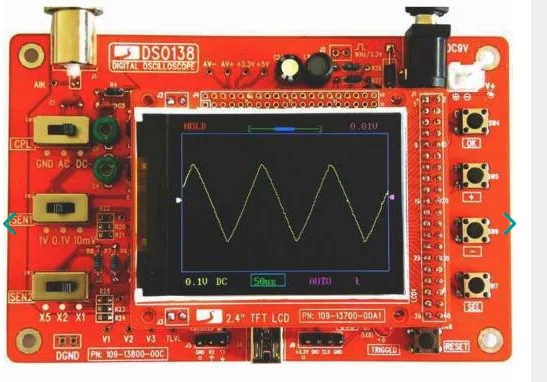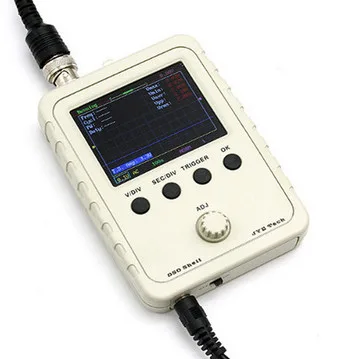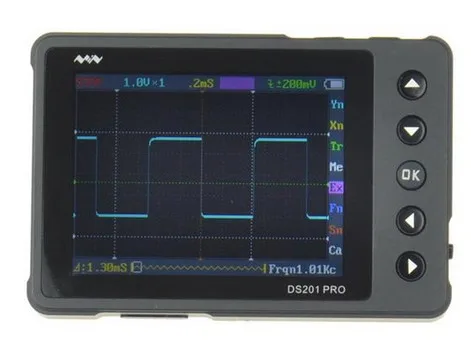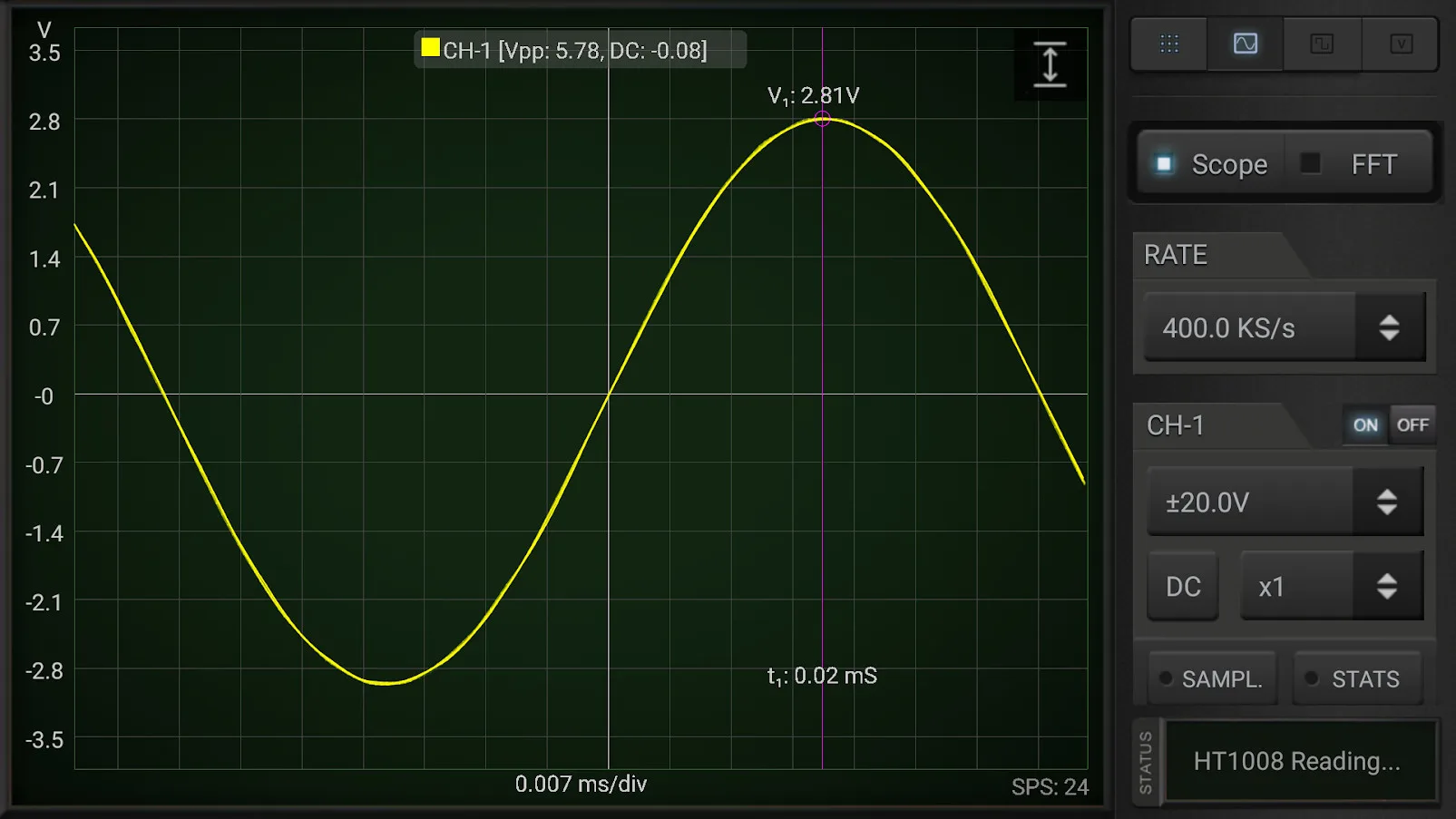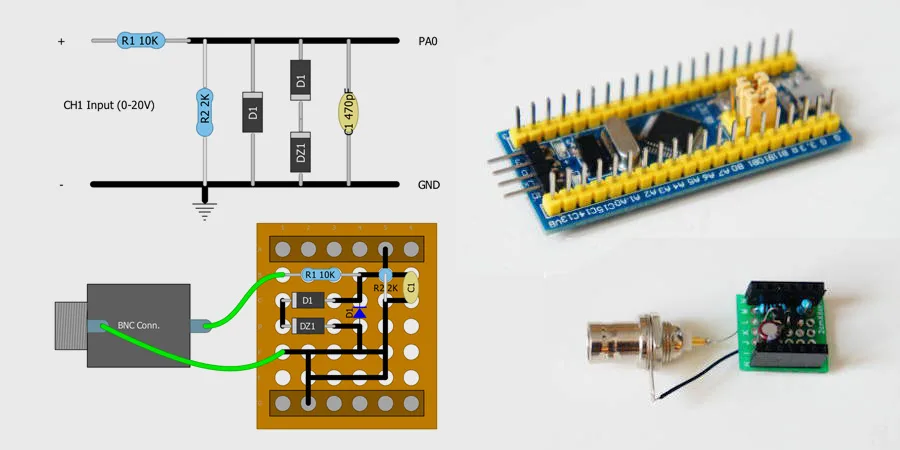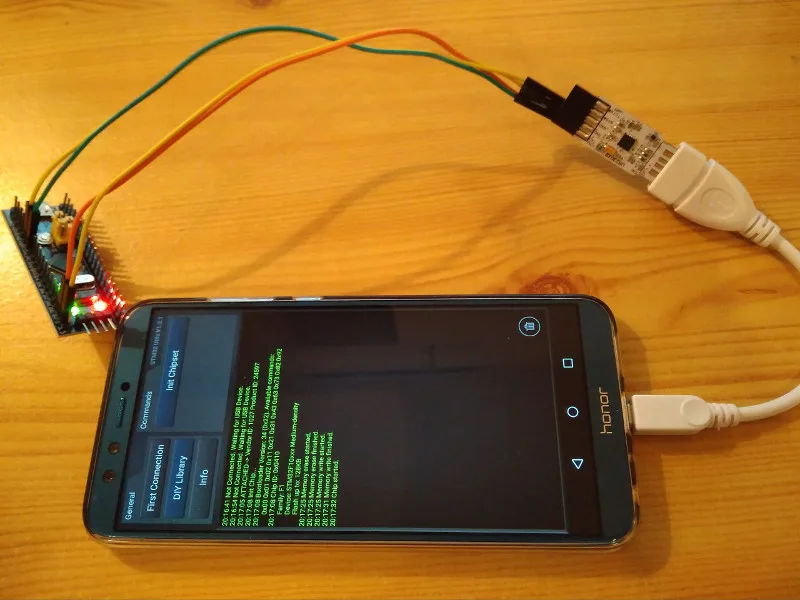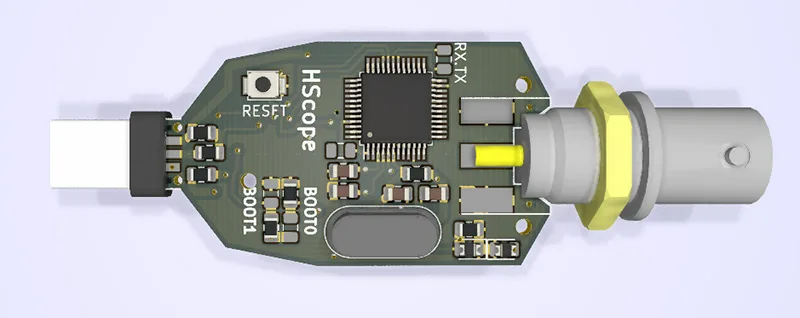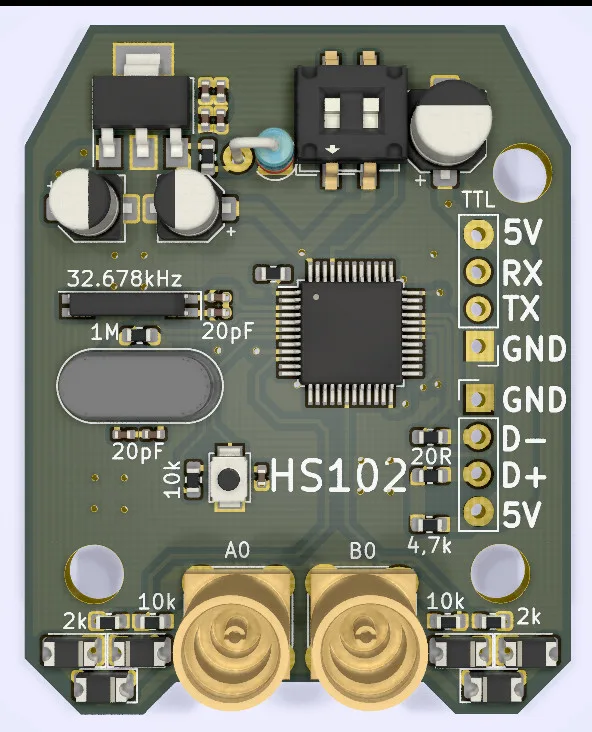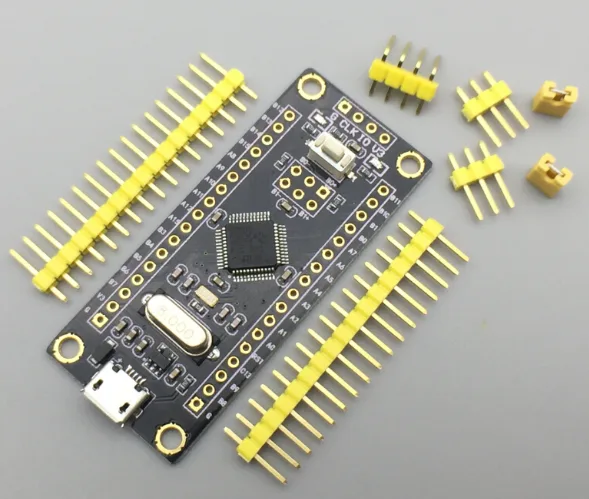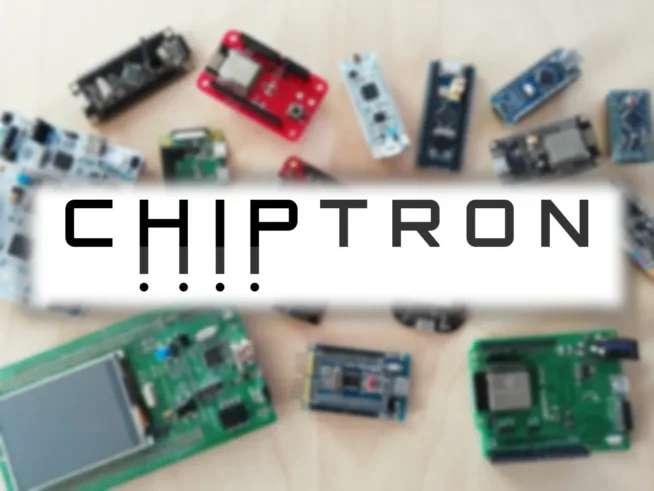You can buy a few types of oscilloscopes for a few USD. Or also you can made that e.g. Miniscope v2.
One of them is mentioned in this news – HS101. The base component is STM32F103 microcontroller.
You can buy similar oscilloscopes with similar parameters with low price.
The big advantage of this device is user-friendly interface. The waveform is showed on your smartphone with application called HScope.
Parameters:
Channels: 1
Input Voltage: 0 – 20V (if use an oscilloscope probe it works just with x1 factor) or see HW Modules
ADC Resolution: 12 Bits
Sampling rates: 3KS/s, 6KS/s, 12KS/s, 25KS/s, 50KS/s, 75KS/s, 100KS/s, 150KS/s, 300K/s, 450KS/s, 600KS/s, 900KS/s, 1800KS/s (experimental, not linear)
Bandwidth (sine wave -3dB): 200KHz (not limited without capacitor C1). Sine wave visible with sinc interpolation up to 400KHz @ 1800KS/s)
Continous acquisition: Up to 100KSa/s
Input Noise: < 60mV (<= 15mV for Sampling Rate <= 100KSa/s)
<=20mV with the Black Pill (<=10mV for Sampling Rate <= 100KSa/s)
Input Impedence: 10KΩ
And how to made it? Just use versatile development board called Minimum System Development Board For STM32F103 or BluePill, BlackPill with STM32F103.
Connect the board to your smartphone through ORG cabel, upload the code with STM32 Utils application, solder a few components on versatile board and show the waveform with useful application on smartphone.
And how to upload the FW to STM32 development board with STM32 Utils app?
Just connect:
PA9 on RX USB-UART converter
PA10 on TX
5V on 5V (also labeled like VBUS)
GND on GND
After the connecting of USB-UART converter with STM32 dev board, plug the USB-UART converter through OTG cabel to smartphone which supports USB OTG and also has OS Android.
The power LED is on.
Press the reset button, run the STM32 Utils App and press “Init Chipset”.
If you don’t like this bare device, you can made nicer board specially designed for this scope (KiCad).
The second version of oscilloscope is in developing and it will be called HS102. It contains two inputs and the main microcontrollers is still STM32F103.
Homepage of HScope: http://hscope.martinloren.com/HS101-oscilloscope.html
HScope App: https://play.google.com/store/apps/details?id=com.martinloren.hscope
STM32 Utils App: https://play.google.com/store/apps/details?id=com.martinloren.stm32utils
Homepage of STM32 Utils: http://stm32utils.martinloren.com/
